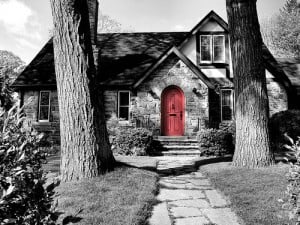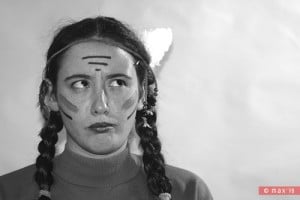Today is Truth and Reconciliation Education Day in British Columbia. I’ve been watching the tweets all week to see people sharing photos and experiences from the events. Today is a special day in the week of events because today is the day that thousands of students from around British Columbia, including many from my school district and community, gather at the PNE exhibition grounds for a day tailored to them. For those who don’t know what this is all about, the Truth and Conciliation Commission of Canada website is a good place to start.
I would have loved to have gone. As a person with Aboriginal heritage, I would have been honoured to go. And yet, as a person with a direct family history of residential school experience, I could not bring myself to go. I’ve written next to nothing in this space, or anywhere online, about my great-grandmother’s (Nanny) experiences in residential school. There is only one post that even talks about Nanny. There are many reasons for this.
The strongest thing holding me back from sharing her story online is that she didn’t want anyone to know that she had gone to residential school and she didn’t want anyone to know that she was Aboriginal. She was a perfect example of the desire to assimilate indigenous peoples into the colonial vision of what Canada’s people should be. She died with her Aboriginal heritage her secret and it was only through my aunt’s curiosity that my family learned of our Métis and Cree family in Manitoba years after Nanny’s death.
So while the week’s events that center around a formal attempt to heal and educate about Canada’s residential school history are of direct importance to me, I could never bring myself to go. Is that shame still lingering in my blood? Or is it respect for Nanny’s wish of privacy that holds me back?
While I am not there physically, I am certainly there in spirit. I’ve been following as much as possible online and reflecting on how I can honour and remember and help with the healing in my own way. I have both a personal and professional approach to this, and while, thanks to my Masters research I feel at peace with the personal, I feel the need to do more professionally.
In the past I’ve included Aboriginal and indigenous themes in my classroom in a variety of ways. I’ve made sure we had novels on residential schools in the ECC online literature circles. I’ve connected my students to others learning about Aboriginal heritage in an inter-district moodle project. I’ve planned out and taught lessons on indigenous artforms from around the world. I’ve happily headed off to the St’at’imc room when invited to sing and dance with my students. Every time I’ve brought this topic into my classroom, I’ve thought it was important and every time, in all grades, I’ve inwardly steeled myself for resistance. And most times there has been resistance of some sort, from a quiet rejection of the novel because of the topic to all out emotional outbursts from high school students about ‘why do we have to learn about this stuff in art anyway’?
This year I’m going to try something different. I’m going to honour and remember my traditional indigenous heritage and take a completely child-centered approach. I’m going to ask the kids. What do they want to learn about Aboriginal topics this year? What units would they like me to integrate Aboriginal and indigenous content within? How would they like to honour the people that have lived in the place on which the school is built for thousands of years within our classroom this year? How would they like to learn about all the different family backgrounds that walk into the room with students and adults each day?
The longer I teach, the more this approach seems to be embedded within what I do. And the more it seems to lead to powerful learning and engaged students. On this day of Truth and Reconciliation that honours the kids, I’m giving my word to remember, honour and heal by starting with honouring the kids first.



